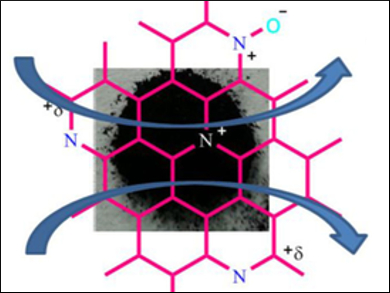Metal-free catalysts based on N-doped carbon hybrid materials can be directly used in chemical reactions. These catalysts are highly desirable because of their environmentally friendly properties, such as recyclability and low toxicity.
Yu Liu, Nankai University, Tianjin, China, and colleagues have used β-cyclodextrin (a kind of cyclic oligosaccharide composed of seven d-glucopyranoside units) and nitrogen-containing small molecules (melamine, dicyandiamide, and guanidine sulfamate) to construct a series of nitrogen-doped mesoporous carbon materials. The team used a silica template, which was removed after carbonization of the material.
The carbon hybrids have high Brunauer–Emmett–Teller surface areas as well as appropriate pore volumes and pore diameters for catalytic applications. The materials show very good catalytic performance for the hydrogenation of various nitroarenes and can be easily recovered by centrifugation without any loss in catalytic performance. N-doped carbon hybrids could also be useful in other fields of catalytic chemistry.
- Cyclodextrin-based Mesoporous N-Doped Carbon Hybrids with High Heterocatalytic Activity,
Jun Tian, Yong Chen, Wei Li, Yu-Ping Liu, Wei-Lei Zhou, Yu Liu,
Asian J. Org. Chem. 2017.
DOI: 10.1002/ajoc.201700155
